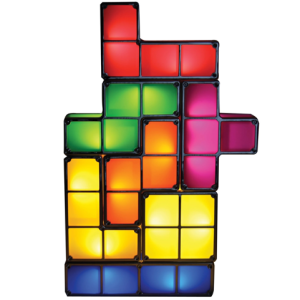Could ‘Tetris’ Spell The End Of The Eye Patch?
Scientists Use Computer Games To Treat Lazy Eye
Do you remember the iconic game, ‘Tetris’? It involves moving different shaped blocks to fit a pattern at the base of the screen. The object is to create complete ‘lines’. It’s simple and it’s fun, but did you know that it could also be good for your eyes? Latest research shows that playing simple video-games such as ‘Tetris’ can be an effective treatment for amblyopia (commonly known as ‘lazy eye’).
What Is Amblyopia?
Amblyopia is the most common impairment for childhood vision, affecting approximately three in every 100 children. The vision in one eye does not develop quite as it should. The child then becomes reliant on the ‘good’ eye, whilst the under-developed eye becomes increasingly lazy. If it remains untreated, vision in the one eye could be lost completely.
How Is Amblyopia Treated?
Traditionally, amblyopia is treated by compelling the amblyopic (or ‘lazy’) eye to work harder by obstructing the other eye with a patch. This is effective in children, especially if the disorder is treated early, but it has shown little or no results when used by adults.
New Methods To Treat Amblyopia
Dr. Robert Hess of McGill University, Montreal, Canada has found a new method. He believes that rather than separating the eyes and thus, further encouraging them to work independently, treatment should involve forcing them to co-operate. To do this, he used ‘Tetris’.
Hess took 18 adults suffering from amblyopia and separated them into two conditions: those who played Tetris using the traditional treatment method, the eye-patch, and those who played using a specially designed set of gaming goggles. These goggles allowed the game to be displayed dichoptically. This means that one eye could only see the falling blocks whilst the other could only see the base blocks into which they must fit. So, the dichoptic gaming goggles force the eyes to co-operate, because without co-operation the player could only lose.
The nine participants who played using the goggles reported a dramatic improvement in the vision of their ‘lazy eye’, as well as increased depth perception. Those who played the game normally whilst wearing a patch experienced only a moderate improvement, although after switching to the dichoptic method, their improvement also intensified. These are fantastic results for sufferers of amblyopia and it shows that the eyes can effectively be trained to work together. Hess intends to complete research into the same treatment but for children later this year.
So whilst video-games may typically have a negative reputation, it turns out that perhaps it’s not all that bad after all.



